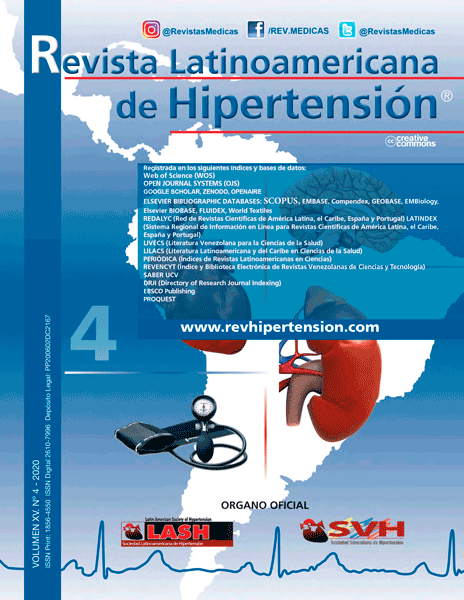Cardiac assessment among young ischaemic stroke patients in Babylon Province
Palabras clave:
Cardiac Assessment, Young Ischemic Stroke, Babylon ProvinceResumen
Abstract: Stroke is the third leading cause of death and the second most frequent cause of morbidity in developed countries. The annual incidence of acute stroke (300/100000) in U.K. Stroke is defined as a focal loss of neurological function of presumed vascular origin, which causes death or last for over 24 hours. Fifty young patients with ischemic stroke are included in this cross-sectional study, collected during the period from 1 January to 30 December 2019 for both sexes. They have been seen as an inpatient for new cases and outpatient clinics in Merjan teaching hospital in Babylon city. A cross-sectional study in which the total number of young ischemic stroke patients were (50) patients divided into two age groups (20-34) years are containing 13(26%) males and 9(18%) females. (35-40) years having 17(34%) males and 11(22%) females, Ischemic stroke patients with early morning events were 8 (16%) hypertensive patients and 3 (6%) non-hypertensive patients compared to 4 (8%) hypertensive patients and 35 (70%) non-hypertensive patients with events occurring at other times, Left-sided hemiplegia found in 31(62%) of patients compared to 19(38%) of patients with right sided hemiplegia. Two or more a risk factors have been found in 28(56%) of patients with is chemical stroke. Most of the embolic stroke associated with seizure, in our study has been found 7(14%) cases, while most of the bleeding stroke preceded with headache in our study has been found 6(12%) cases. Recurrent stroke found in 5 (10%) patients, it has been found that 4 (8%) of them were two to cardiac causes. Elusive diagnosis found in 17(34%) of ischemic stroke patients. The cardiac assessment for any patients it very important firstly in detecting cardiac causes whether congenital (e.g.) patent foramen oval or acquired (e.g.) valvar heart lesion and secondly in management of stroke to prevent recurrence by using anti-thrombotic therapy in Babylon city.

